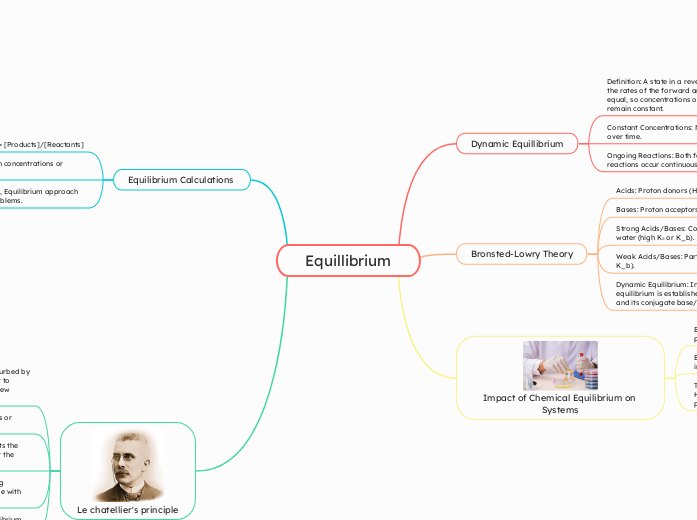Equillibrium
Dynamic Equillibrium
Definition: A state in a reversible reaction where the rates of the forward and reverse reactions are equal, so concentrations of reactants and products remain constant.
Constant Concentrations: Not equal, but steady over time.
Ongoing Reactions: Both forward and reverse reactions occur continuously.
Bronsted-Lowry Theory
Acids: Proton donors (H⁺)
Bases: Proton acceptors (H⁺)
Strong Acids/Bases: Completely dissociate in water (high Kₐ or K_b).
Weak Acids/Bases: Partially dissociate (low Kₐ or K_b).
Dynamic Equilibrium: In weak acids/bases, equilibrium is established between the acid/base and its conjugate base/acid.
Impact of Chemical Equilibrium on Systems
Biological Systems: Enzyme-catalyzed reactions, pH regulation in blood.
Biochemical Systems: Metabolic pathways, drug interactions.
Technological Systems: Industrial synthesis (e.g., Haber process), pollution control, manufacturing processes.
Equilibrium Calculations
K = [Products]/[Reactants]
Using K: Solve for unknown concentrations or equilibrium positions.
ICE Tables: Initial, Change, Equilibrium approach for solving equilibrium problems.
Le chatellier's principle
Principle: If a system at equilibrium is disturbed by changing conditions, the system will adjust to counteract the disturbance and restore a new equilibrium.
Concentration: Adding/removing reactants or products shifts the equilibrium.
Temperature: Changing temperature affects the equilibrium position depending on whether the reaction is exothermic or endothermic.
Pressure: For gaseous reactions, increasing pressure shifts equilibrium towards the side with fewer moles of gas.
Catalysts: Affect the rate of reaching equilibrium but not the position of equilibrium.
